ROMAN PSYCHE BALSAMARIUM 2nd century AD A bronze balsamarium of Psyche standing with right hand extended at waist height, left hand raised, two small wings to the shoulders; a loosely draped peplos to the hips and left shoulder; the hair neatly dressed in melon coiffure, with diadem and brow band; the eyes with white stone inserts; the top of the head a hinged lid with vent above, second vent in the palm of the right hand; mounted on a custom-made stand. Accompanied by an Art Loss Register certificate. 1.1 kg, 26cm including stand (10 1/4"). Very fine condition. Provenance Property of a North West London gentleman; acquired from a London gallery in 1986. Literature See Adkins, L. & R.A. Dictionary of Roman Religion, Oxford, 1996; Hammond, N.G.L. & Scullard, H.H. (eds) The Oxford Classical Dictionary, Oxford, 1970; Roberts, P. Life and Death in Pompeii and Herculaneum, London, 2013; Rolland, H. Bronzes Antiques de Haute Provence, Paris, 1965; Watts, D. Religion in Late Roman Britain, London, 1998. Footnotes A belief in the transcendent soul plays an important role in most religions, but seldom do we find such a beautiful, strong and gentle personification of the human soul as in Ancient Greece. From what we know of Greek attitudes, the afterlife was not particularly pleasant for the souls of ordinary people, who were condemned to wander in the dark realm of the Underworld. But there was always the hope of escaping such a fate, reflected in the many stories of mortal heroes conquering death and becoming immortals. Even though the soul's journey beyond death is one of the most important motifs recurring in nearly all known mythologies, the Greek story of Psyche is in its way extraordinary. The famous Roman writer Virgil (Eclogue X) commented on the tale omnia vincit amor, or ‘love conquers all’. Psyche's unconditional love for Eros (known to the Romans as Amor or Cupid) was stronger than her fear of death, leading her on a dangerous journey to the palace of Proserpine (Persephone), to recover a container filled with “beauty" for Venus. As a mortal, she could not resist temptation and dared to open the box in order to discover the secret of Venus’s loveliness and to take a small portion for herself. But inside she found no cosmetics, only the deepest sleep which engulfed her. Fortunately, her beloved husband woke her so they could be united once again for eternity (Hammond & Scullard, 1970; Adkins & Adkins, 1996, p.186). No wonder this story inspired artists in the Greek and Roman worlds, especially in the production of objects connected with death and with funeral rites. Psyche can be seen as the personification or guardian of the human soul, symbolized by the butterfly and its brightly-coloured wings. Eros is frequently depicted holding a torch lighting the way to the Underworld, or dousing the torch’s flame to symbolize the extinguishing of human life. Together, they appear as the guides of the souls of the dead and as a symbol of hope for victory over death. We can find the couple on the walls of Pompeii (Roberts, 2013, fig.126), or engraved in a tight embrace on some marble sarcophagi (e.g. the British Museum’s example from San Cesareo, accession no.1805,0703.132), or in the same pose on a mosaic in Cordoba, reminding us of the embrace of death without fear. The butterfly wings of Psyche can be also admired on a stunning mosaic in Antakya museum, Turkey, and on a bronze statue found in the ruins of the Roman town of Glanum, southern France – the latter a rare three-dimensional example (Rolland, 1965, item 146). Her connection to both death and cosmetics mentioned in the myth is reflected in painted Roman wall fragments depicting the preparation of perfume or cosmetics by Cupid and Psyche. Vessels containing these substances, called an unguentarium or balsamarium, were usually made of glass and are found in Roman cemeteries; bronze and figural examples are very rare (Watts, 1998, p.138). Therefore, a balsamarium in the sha
ROMAN PSYCHE BALSAMARIUM 2nd century AD A bronze balsamarium of Psyche standing with right hand extended at waist height, left hand raised, two small wings to the shoulders; a loosely draped peplos to the hips and left shoulder; the hair neatly dressed in melon coiffure, with diadem and brow band; the eyes with white stone inserts; the top of the head a hinged lid with vent above, second vent in the palm of the right hand; mounted on a custom-made stand. Accompanied by an Art Loss Register certificate. 1.1 kg, 26cm including stand (10 1/4"). Very fine condition. Provenance Property of a North West London gentleman; acquired from a London gallery in 1986. Literature See Adkins, L. & R.A. Dictionary of Roman Religion, Oxford, 1996; Hammond, N.G.L. & Scullard, H.H. (eds) The Oxford Classical Dictionary, Oxford, 1970; Roberts, P. Life and Death in Pompeii and Herculaneum, London, 2013; Rolland, H. Bronzes Antiques de Haute Provence, Paris, 1965; Watts, D. Religion in Late Roman Britain, London, 1998. Footnotes A belief in the transcendent soul plays an important role in most religions, but seldom do we find such a beautiful, strong and gentle personification of the human soul as in Ancient Greece. From what we know of Greek attitudes, the afterlife was not particularly pleasant for the souls of ordinary people, who were condemned to wander in the dark realm of the Underworld. But there was always the hope of escaping such a fate, reflected in the many stories of mortal heroes conquering death and becoming immortals. Even though the soul's journey beyond death is one of the most important motifs recurring in nearly all known mythologies, the Greek story of Psyche is in its way extraordinary. The famous Roman writer Virgil (Eclogue X) commented on the tale omnia vincit amor, or ‘love conquers all’. Psyche's unconditional love for Eros (known to the Romans as Amor or Cupid) was stronger than her fear of death, leading her on a dangerous journey to the palace of Proserpine (Persephone), to recover a container filled with “beauty" for Venus. As a mortal, she could not resist temptation and dared to open the box in order to discover the secret of Venus’s loveliness and to take a small portion for herself. But inside she found no cosmetics, only the deepest sleep which engulfed her. Fortunately, her beloved husband woke her so they could be united once again for eternity (Hammond & Scullard, 1970; Adkins & Adkins, 1996, p.186). No wonder this story inspired artists in the Greek and Roman worlds, especially in the production of objects connected with death and with funeral rites. Psyche can be seen as the personification or guardian of the human soul, symbolized by the butterfly and its brightly-coloured wings. Eros is frequently depicted holding a torch lighting the way to the Underworld, or dousing the torch’s flame to symbolize the extinguishing of human life. Together, they appear as the guides of the souls of the dead and as a symbol of hope for victory over death. We can find the couple on the walls of Pompeii (Roberts, 2013, fig.126), or engraved in a tight embrace on some marble sarcophagi (e.g. the British Museum’s example from San Cesareo, accession no.1805,0703.132), or in the same pose on a mosaic in Cordoba, reminding us of the embrace of death without fear. The butterfly wings of Psyche can be also admired on a stunning mosaic in Antakya museum, Turkey, and on a bronze statue found in the ruins of the Roman town of Glanum, southern France – the latter a rare three-dimensional example (Rolland, 1965, item 146). Her connection to both death and cosmetics mentioned in the myth is reflected in painted Roman wall fragments depicting the preparation of perfume or cosmetics by Cupid and Psyche. Vessels containing these substances, called an unguentarium or balsamarium, were usually made of glass and are found in Roman cemeteries; bronze and figural examples are very rare (Watts, 1998, p.138). Therefore, a balsamarium in the sha
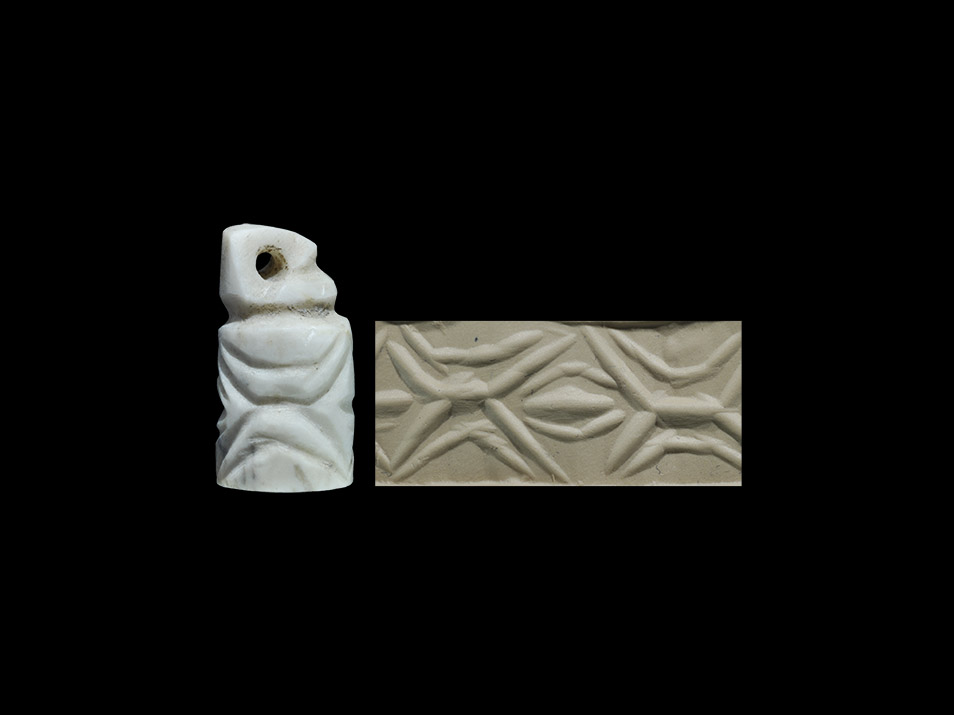
.jpg)
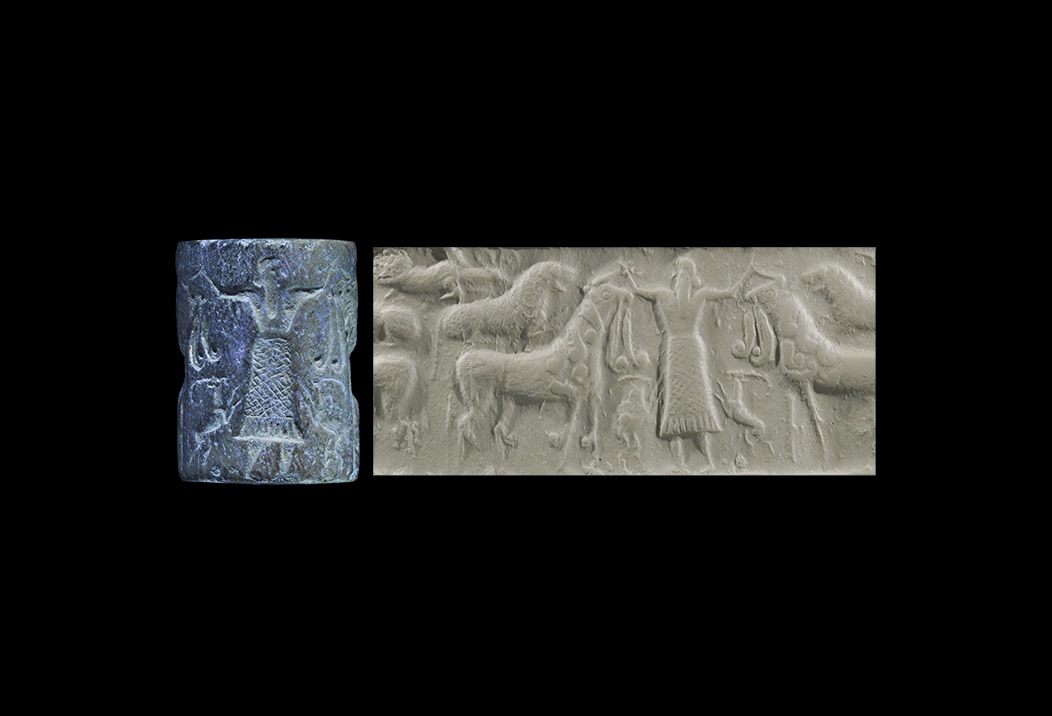
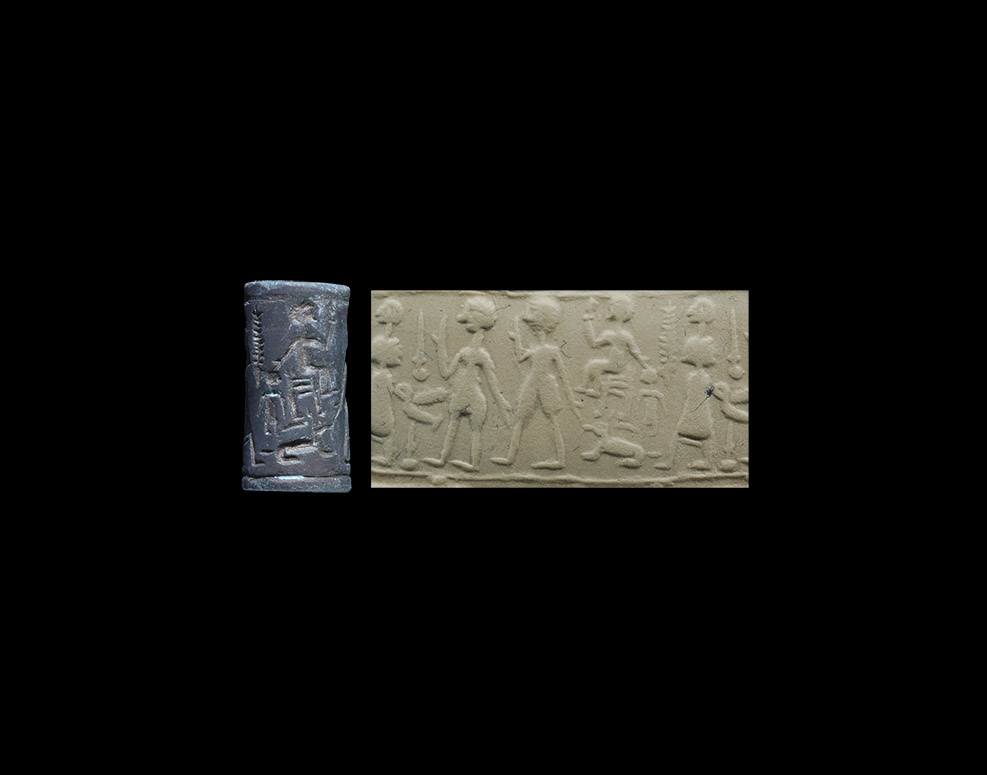
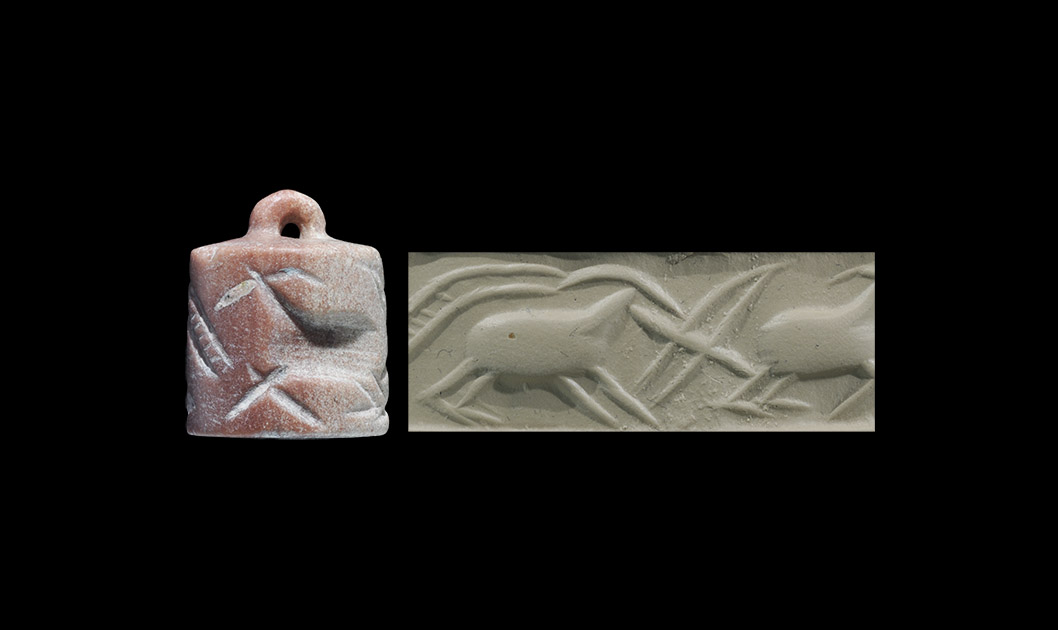
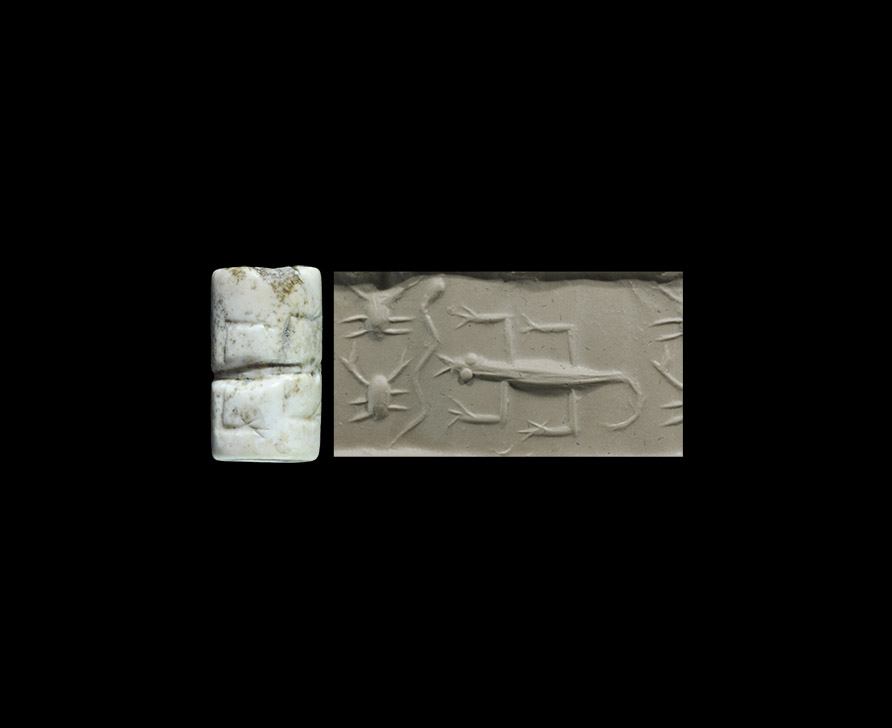
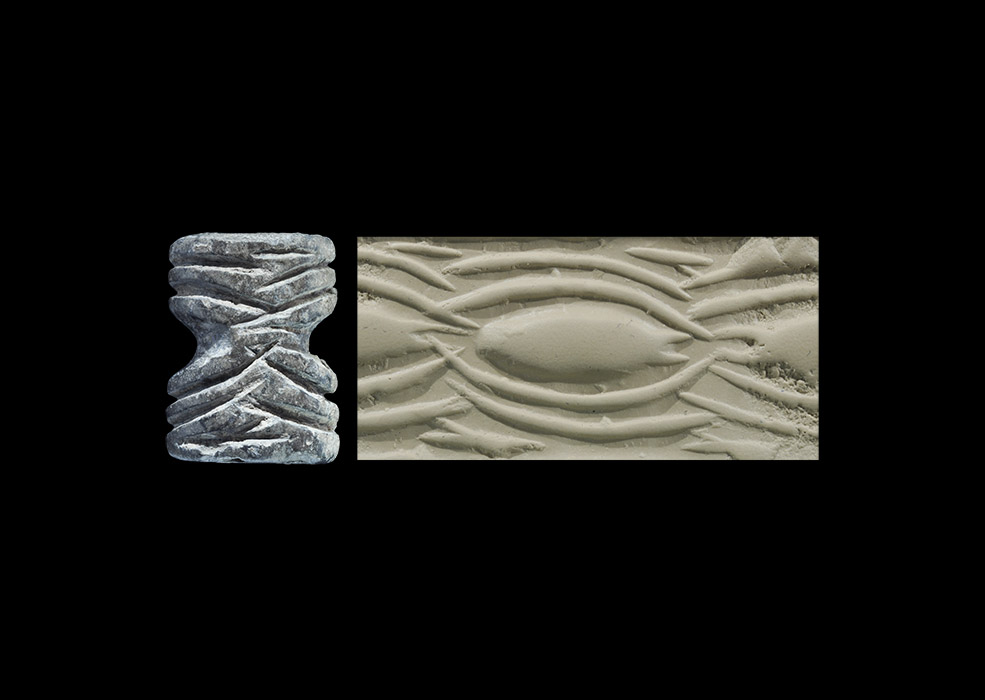
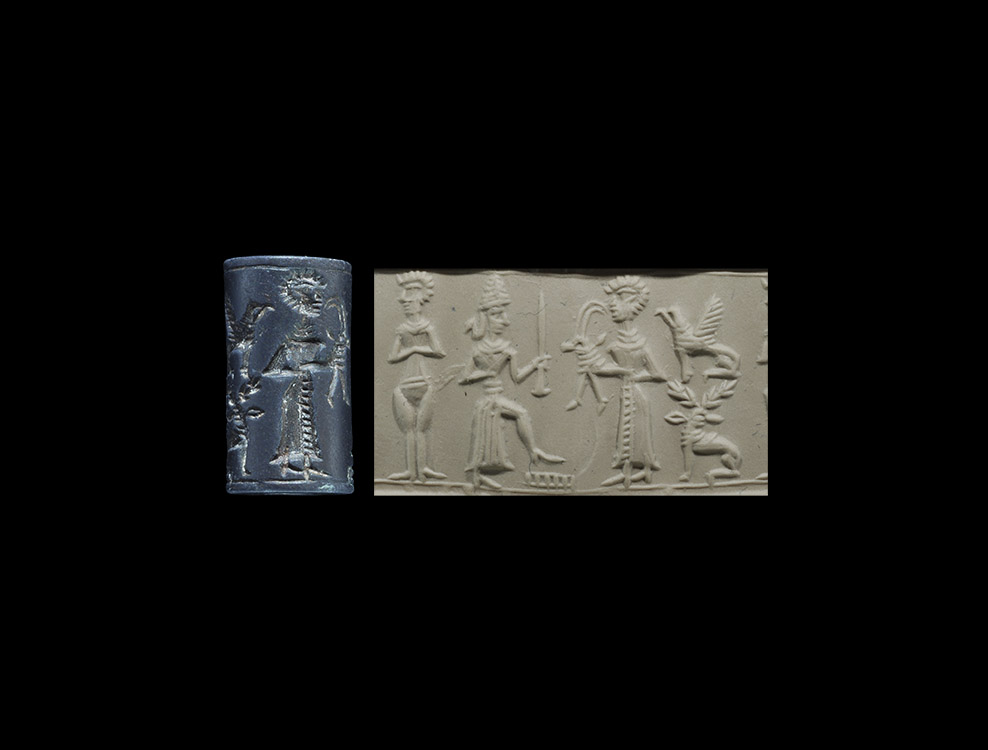
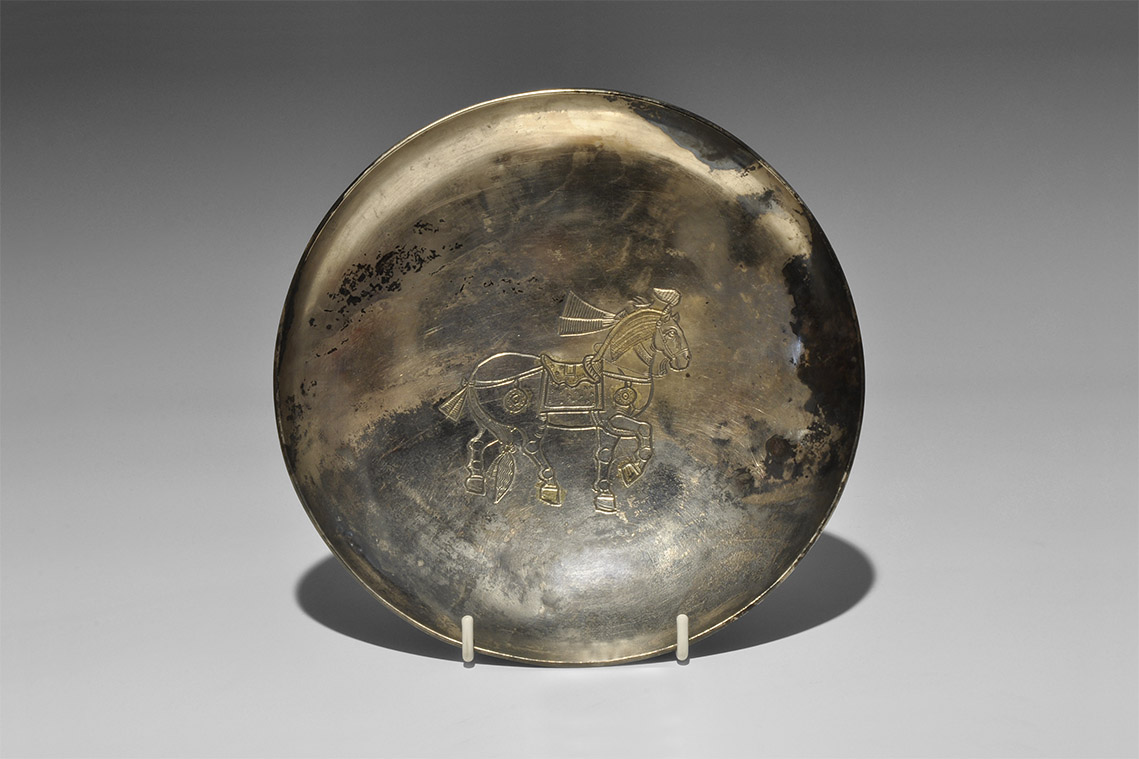
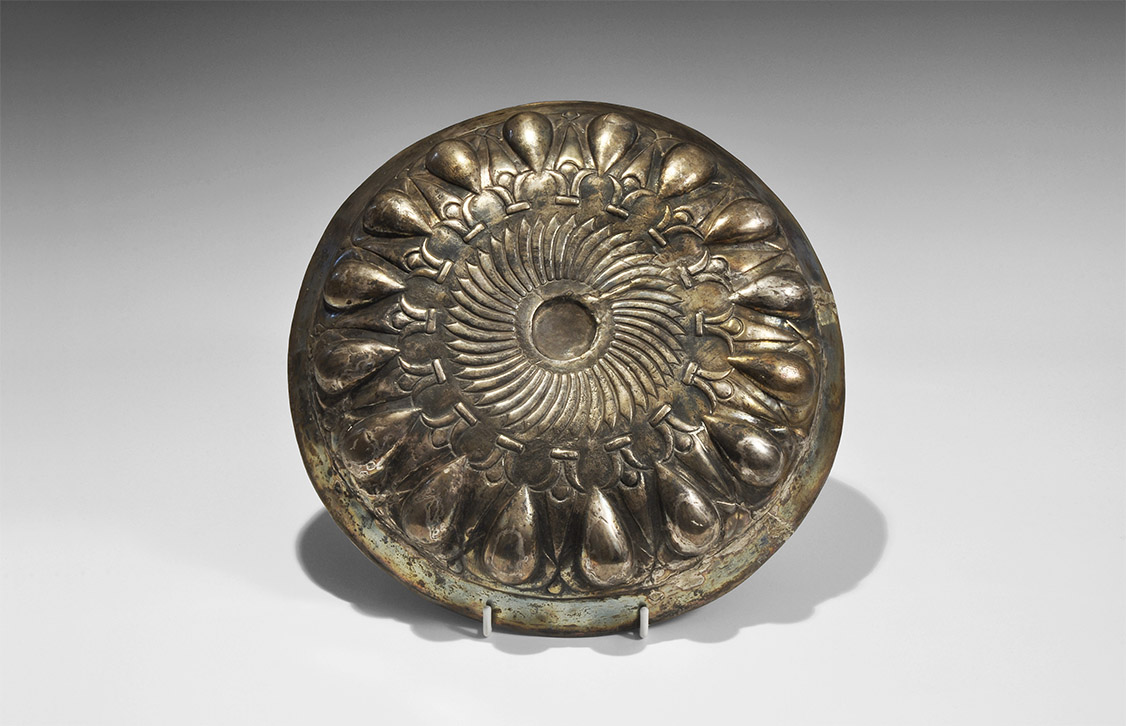
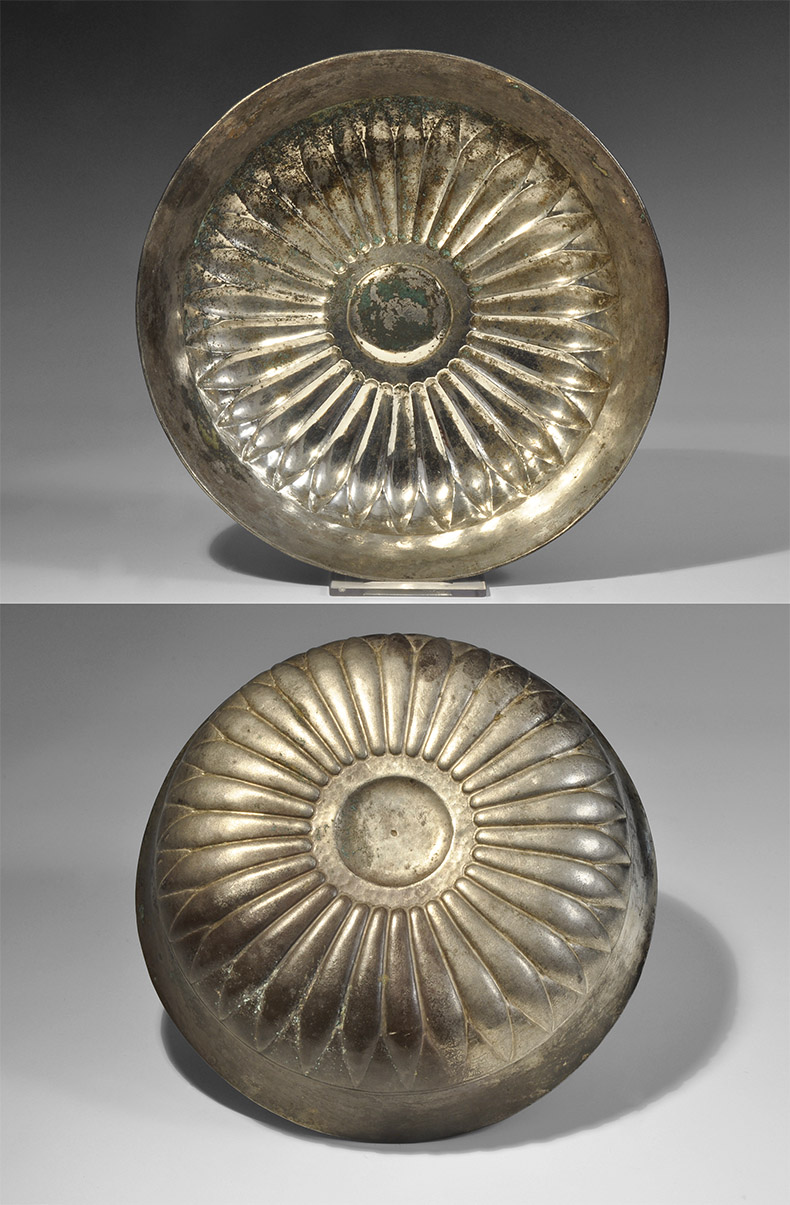
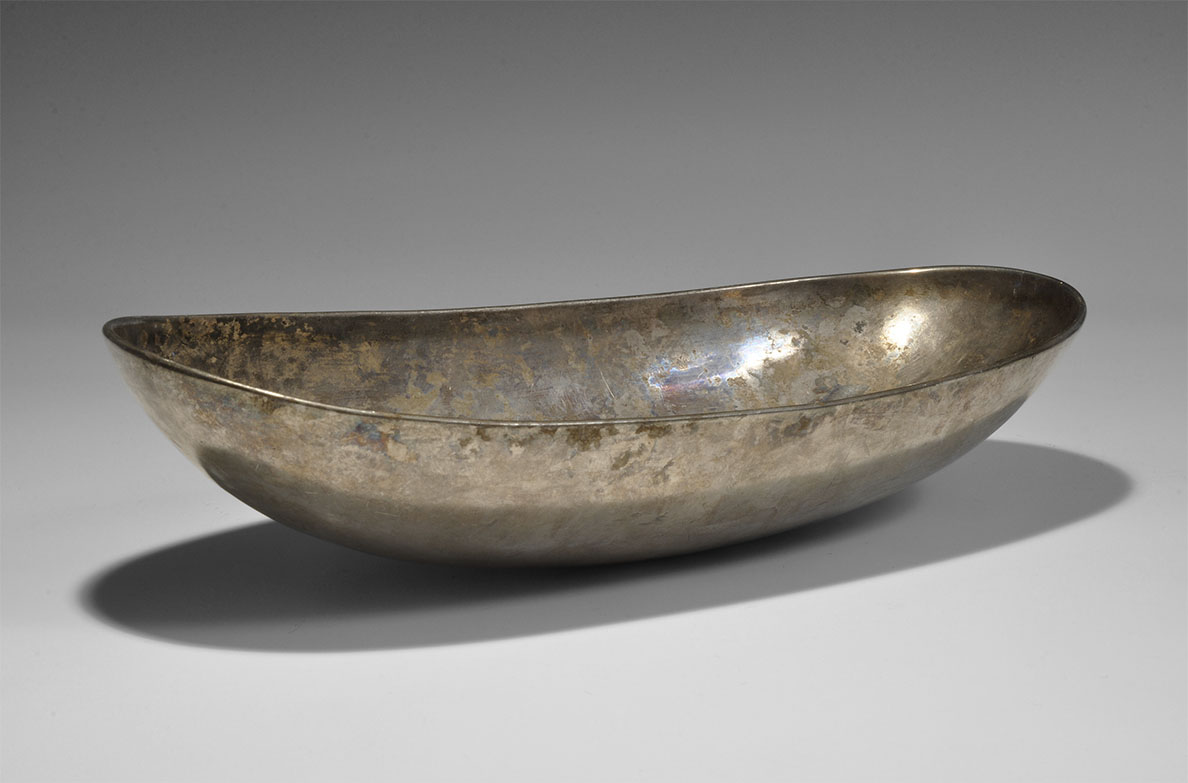
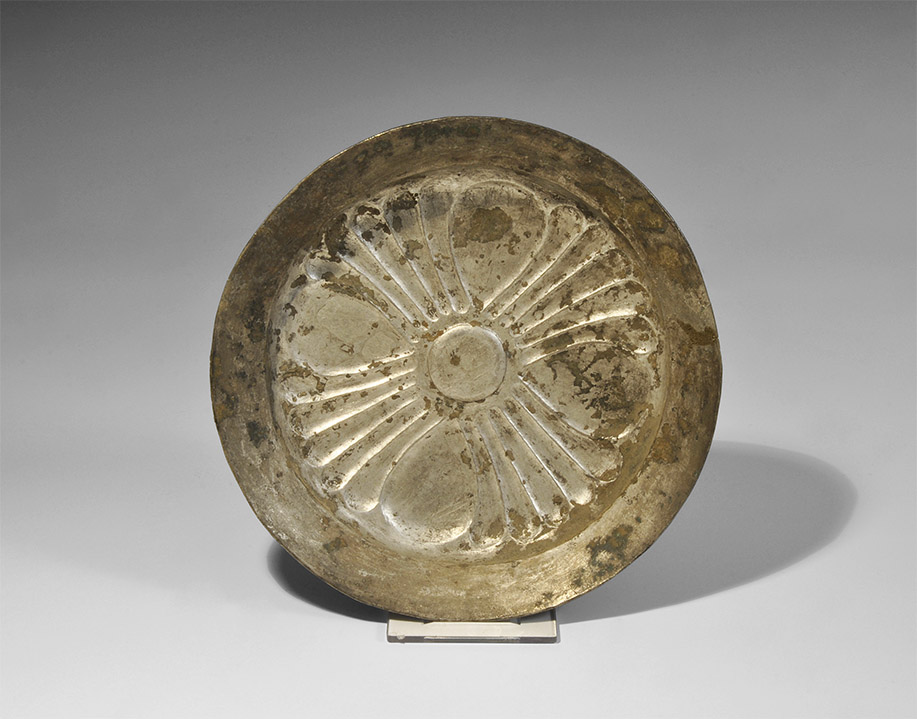
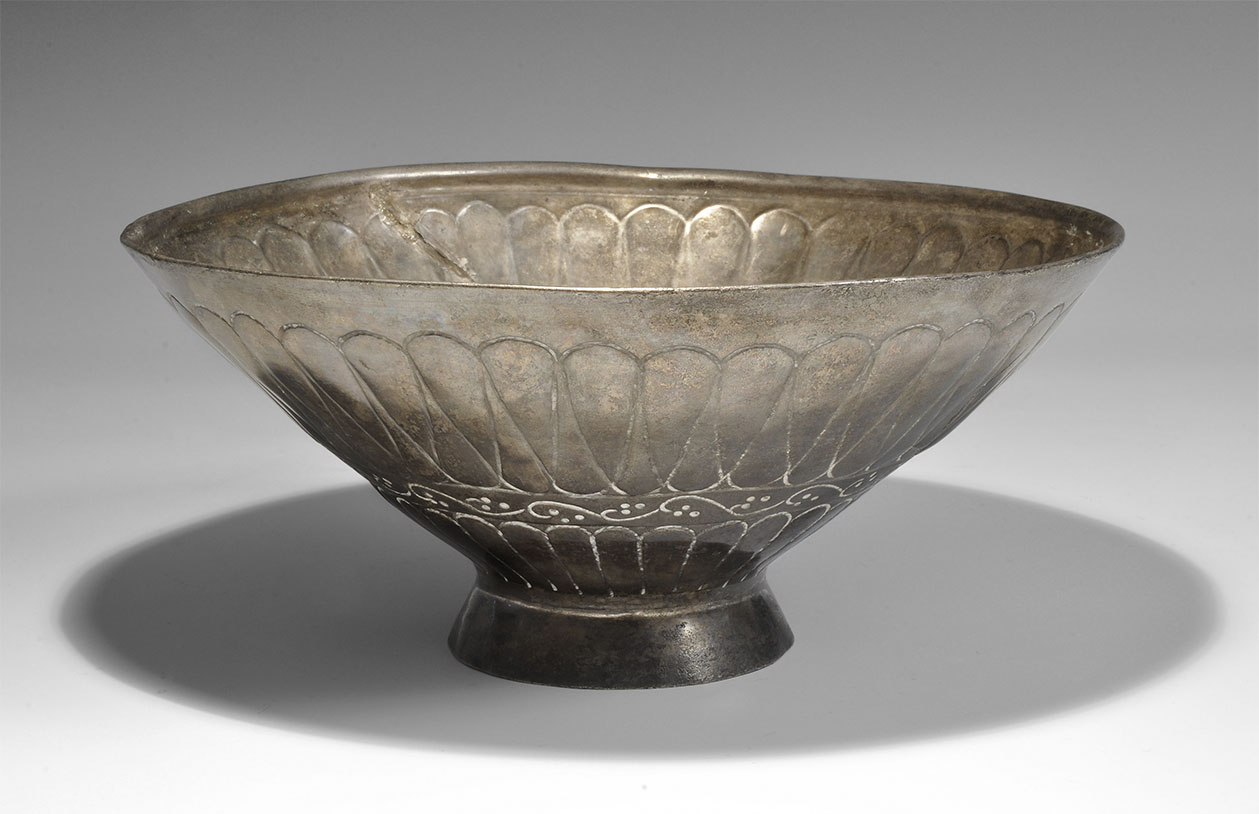
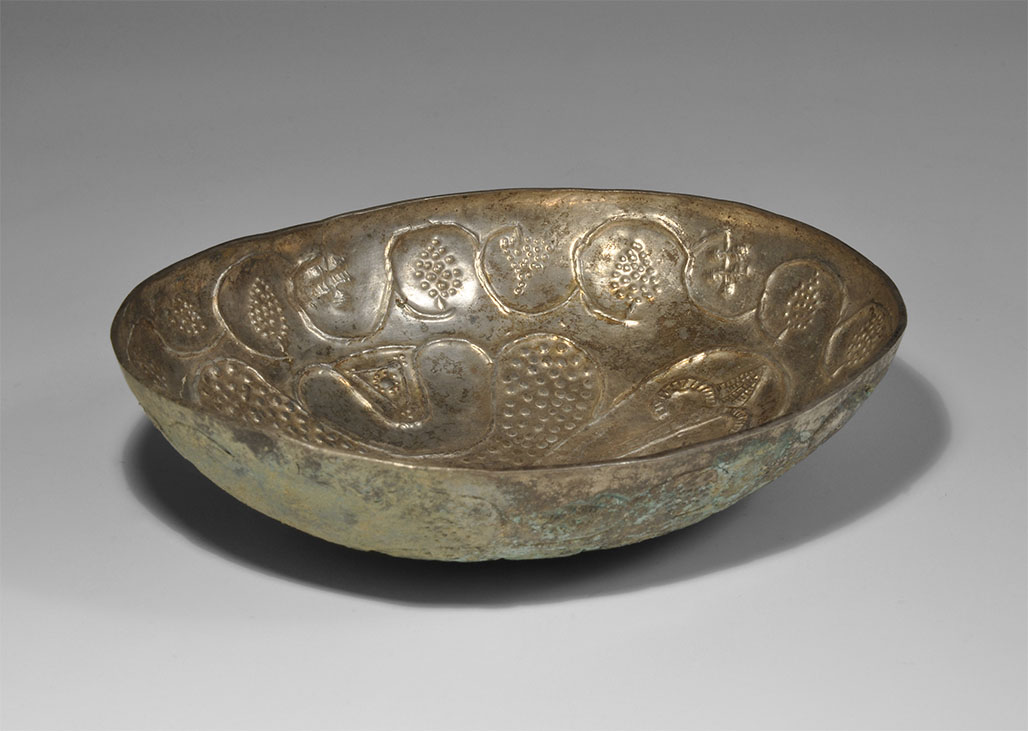
Testen Sie LotSearch und seine Premium-Features 7 Tage - ohne Kosten!
Lassen Sie sich automatisch über neue Objekte in kommenden Auktionen benachrichtigen.
Suchauftrag anlegen